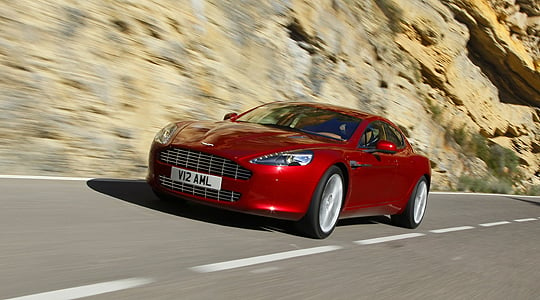
‘Power Beauty and Soul’ is just so 2003. Three new start-sequence words ('Pure... Aston... Martin...') - and two very usable rear seats - make their entrance in the latest model from Aston Martin.
Don’t worry, though: it’s as beautiful up close as in the pictures, has power enough for most and, after a day’s driving in the Valencian hills, turns out to be as soulful as the Reverend Al Green at his most mellow.
Titling its launch event ‘Opening Doors’, the British company used the Spanish city of Valencia to introduce its first four-door to the international press. Rapide is all about space, access and usability. So confident was the Gaydon team in the four-seater’s capabilities, that pairs of journalists were shuttled from airport to restaurant in a fleet of the new GTs. In the rear seats.
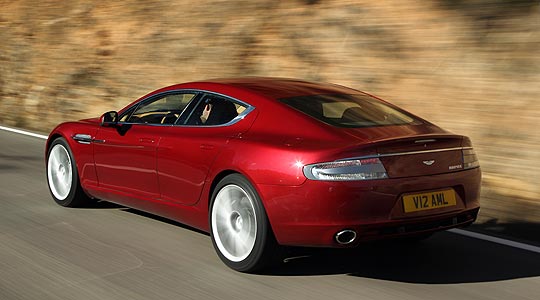
So, to answer your first question: “What’s it like in the back?” I can say: “Pretty damn good”. First impressions are – as the song says – lasting impressions. Over tapas that evening, all the talk was of the cosseting sports seats (I’ll come to the ‘sports’ bit later) and a surprising amount of legroom in the back.
Aston Martin describes the Rapide as a ‘close cousin’ to the DB9. Yes, it carries the family look but, front doors and bonnet aside, every other panel is new. Longer, wider and taller than a DB9, the new car has been teased and stretched to add adequate rear seating for adults, a 90-litre fuel tank and a 317-litre luggage compartment (expandable to 886 litres with the back seats folded down).
Visually, from anywhere but directly side-on, the extra doors are hardly noticeable. The shape still says ‘Aston Martin two-seater GT’ – as it should do. The production facility at Graz, Austria (where Rapide production is based), takes 10 Bridge of Weir hides to produce the equal of anything made at Gaydon. It takes 100 man-hours to build the interior which, on first impressions, looks the best yet with new woods (Tamoh Ash on our test car) mixed with leather – and various treatments, if metal.
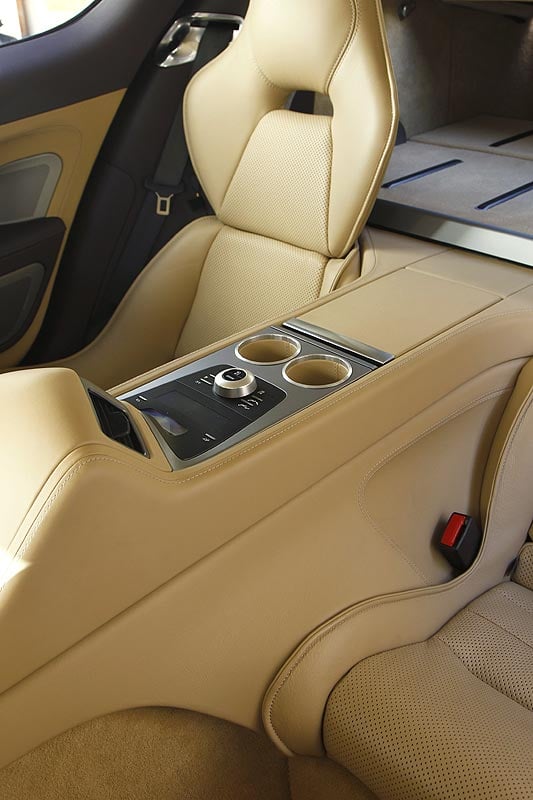
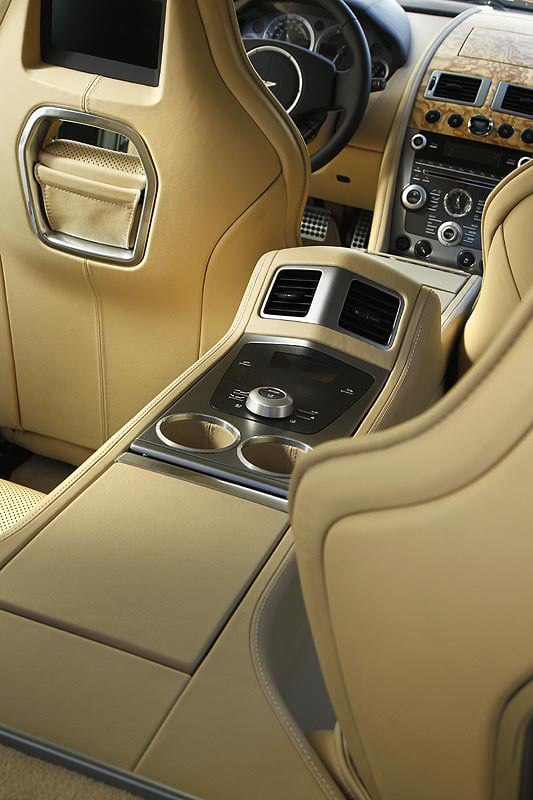
As a driver or front-seat passenger in a Rapide, DB9-owners would notice the extra width of the all-new Recaro seats and a general feeling of spaciousness. This is achieved by an electronic handbrake replacing the fly-off, and much bigger rear side-windows allowing more light into the cabin.
Interestingly, the full-length glass roof of the 2006 Detroit Motor Show concept will probably see production sometime in the future, once early deliveries have been made and the production line is in full swing.
Open any door (both front and rear are ‘swan-hinged’ to clear high kerbs, the front now hinging out to 70deg) and both side-windows conduct a choreographed sequence, allowing all glass to butt tightly when closed. Over 5mph, the new-for-Rapide, double-glazed side-glass tightens a notch more into an ‘air-tight’ position. At speed, the interior is quiet and I think the extra layer of glass (which carries an ‘infrared interlayer’ to help cooling) does make a difference.
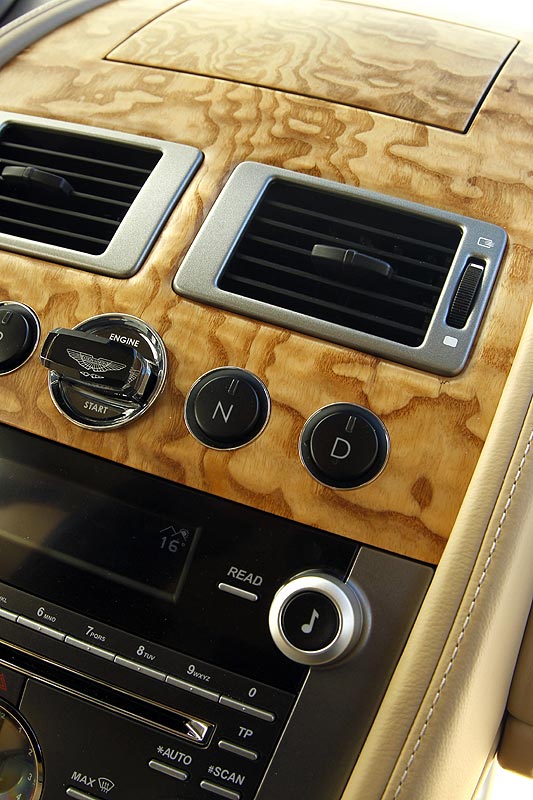
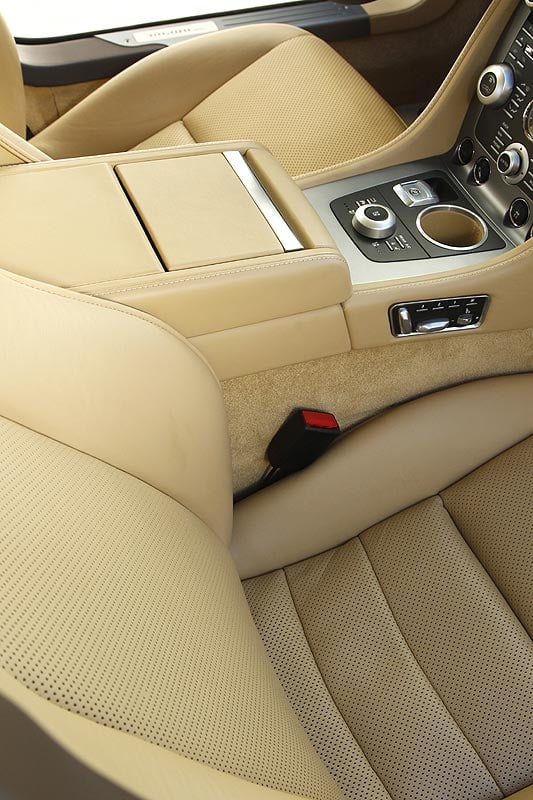
‘At speed’ – that’s what it’s all about. With a length of five metres and a 10 per cent increase in weight over the DB9, it’s inevitable that performance is slightly blunted, although the factory promises a 0-62mph time of 5.2 seconds and a 184mph top speed. The ZF Touchtronic 2 is brilliantly matched to the standard DB9 V12 (470bhp/600Nm torque) and this is the best auto-Aston I’ve driven – by far.
For once, you’ll never regret the lack of a manual option and switching between third and fourth on the bends gives strong acceleration throughout the rev-band. The engine does need to be in ‘Sport’, though (leave the dampers on ‘Normal’; the harder setting does not suit the car and gives few advantages, if any). ‘Seamless’ is oft-used but well describes the sensation of pouring on the power in second, third, fourth and fifth.
The engineers have retuned the exhaust so, over 4000rpm, the characteristic Aston growl sounds smoother, but no less charismatic. Below that engine speed – with torque peaking at 5000rpm – it’s more mechanical; maybe a little too ‘busy,’ we thought? Not sure.
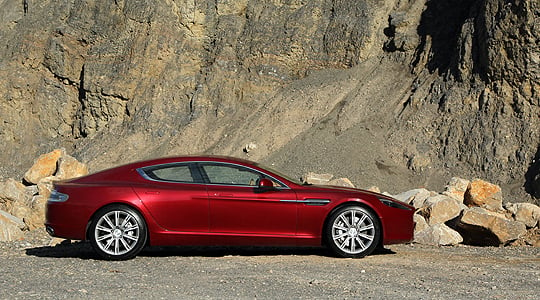
From a handling perspective, the longer wheelbase, greater weight and latest suspension set-up results in a much more compliant ride than before. Motorway cruising is more relaxed, while the wet, twisting section of roads we covered can be accomplished with gusto. You just have to be a little sensible. It’s not a track car, nor is it an AMG Mercedes or RS Audi.
Another new feature (that’s bound to find its way into the rest of the range) is dual-cast brakes. Six-pot front, and four-pot rear Brembo discs of cast iron/cast aluminium pull the car up well, although we found they worked better with more heat in them. Steering? Well-weighted, with good feel and no kick-back. A relaxing, ‘one-hand’ motorway car.

Any niggles are only carryovers from the Gaydon-era Aston Martin model range that debuted with the first of the VH-architecture cars, the DB9, in 2003. The sat-nav still isn’t up to the job but is unlikely to be replaced until an all-new instrument and central console is introduced; the lack of a rear-view camera – essential on such a large car – for the same reason; and the ECU key – about which journalists have always kept their ‘emotions’ in check. It would be a hard man to criticise anything else, given the intended role of the car...
...which is to transport four people, of pretty well all shapes and sizes, in an Aston Martin. And I think it accomplishes that superbly.
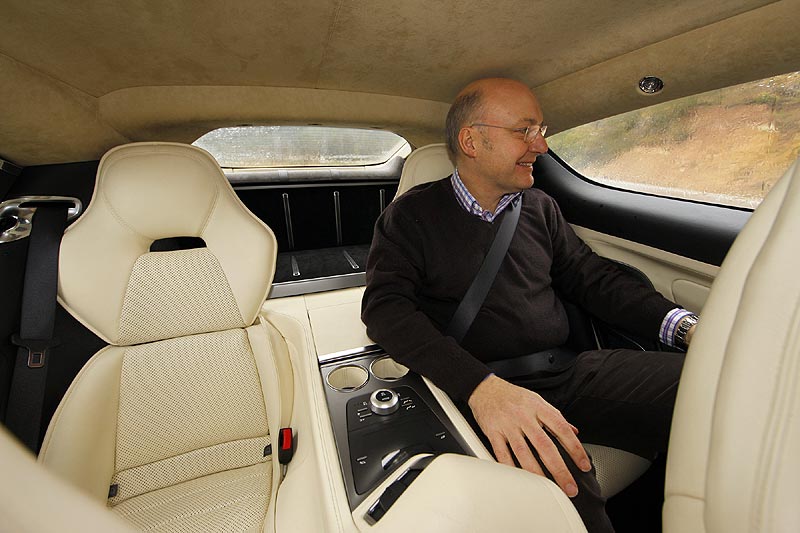
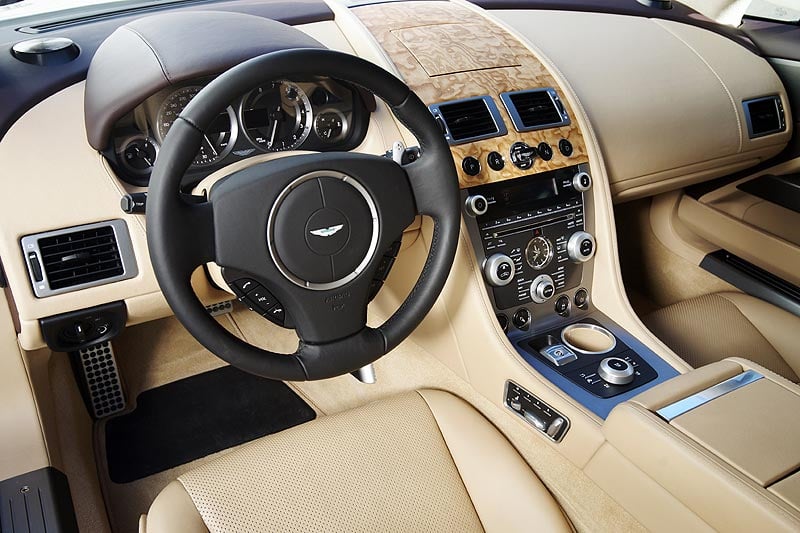
The last stretch of the test-drive was a return run into Valencia, and I took the back seat. You are snugly cocooned with reasonable legroom although it’s not possible to place your feet under the front seat. Headroom is fine for a six-footer but no more. The central, leather-covered spine of the car is quite high, so a rear ‘sports bucket’ is created, holding passengers secure at speed.
For more spirited moments, those in the back can grab the delightful, leather-strapped, aluminium ‘toggles’ magnetically (don’t ask...) held to the B-pillar.
Behind the rear seats, clever variations of the luggage area provide secure, out-of-sight stowage for your valuables, as well as the ability for coats and small bags to be accessible while the car’s on the move. And there’s space for golf bags, mountain bikes (yes, you get TWO in, I’m told) but not enough for an extended holiday for four adults.
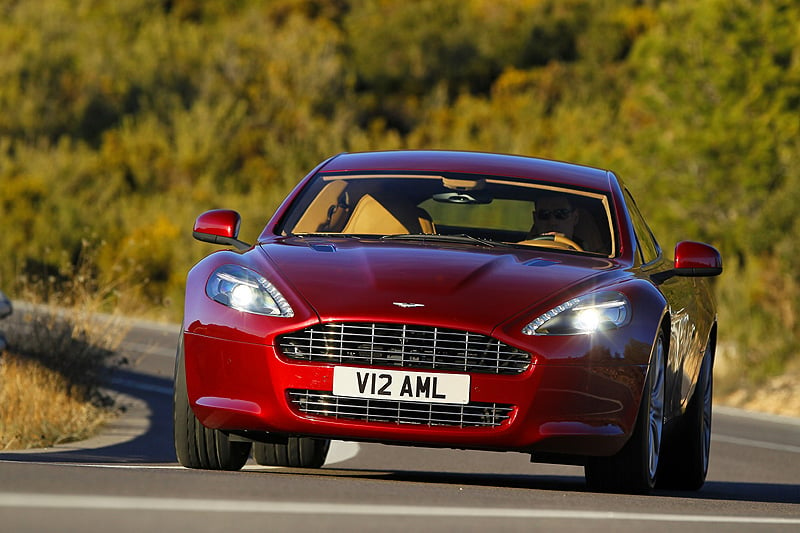
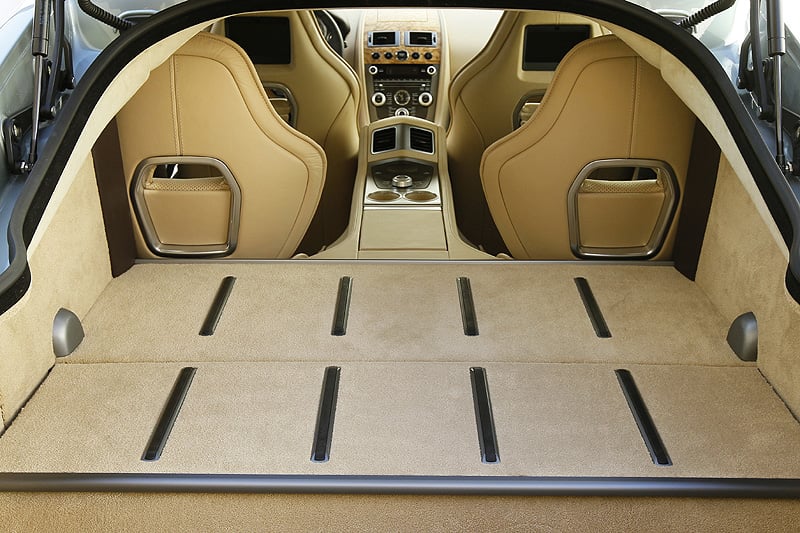
In summary, if you think more Ferrari 612 Scaglietti and Bentley Continental GT than Maserati Quattroporte and Bentley Flying Spur, let alone strange confections such as the Mercedes-Benz CLS, you’ll get the picture on the Rapide. Prospective DB9-buyers would do well to consider the Rapide, too: for not a lot more money (£17,000 or so), you get a more practical, equally elegant Aston Martin, with only a small fall-off in performance.
Does it pass the ‘would you travel to Le Mans in the back seat’ test? Time will tell but, if asked, I’d say “you bet” – but then I’ll try anything once. If you are in the market for a desirable four-seater coupé that just happens to have two extra doors, you should consider the Rapide, a ‘pure’ Aston Martin.
The Aston Martin Rapide is priced from £139,950 and carries a generous standard specification which includes the brilliant Bang & Olufsen Beosound audio system. A seat-headrest Rear Seat Entertainment DVD system for rear passengers is one of the few cost-options available outside the usual bespoke commissioning of trim and paintwork.
Text: Steve Wakefield
Photo: Aston Martin - Strictly Copyright
ClassicInside - The Classic Driver Newsletter
Free Subscription!












